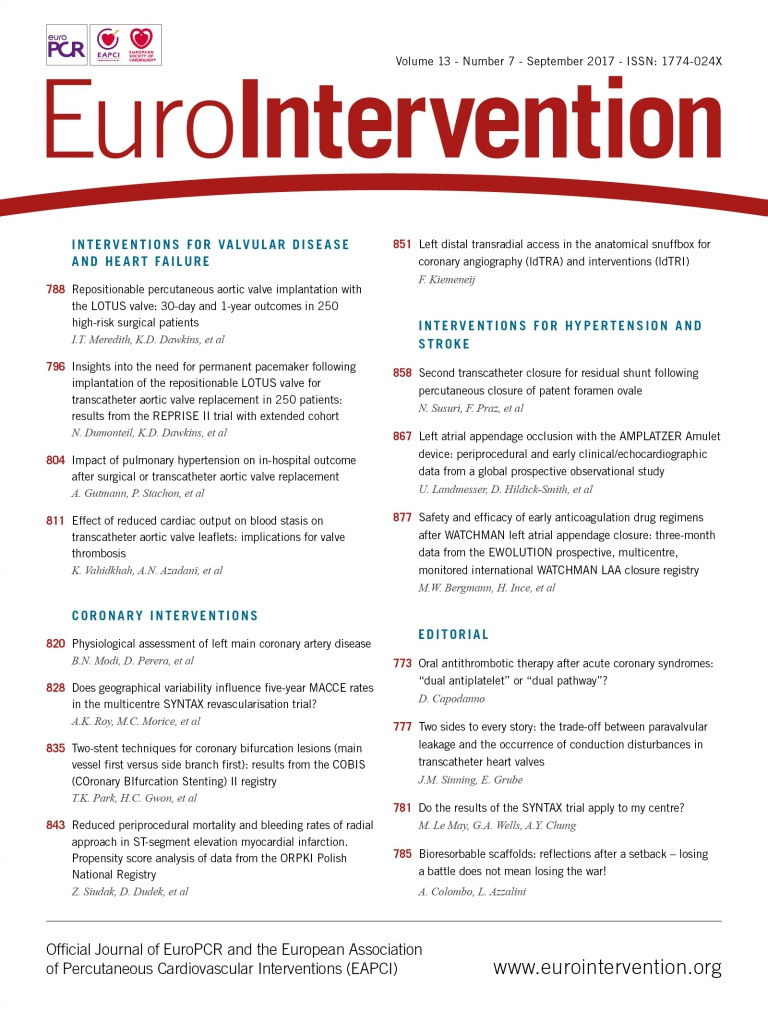
We recently published acute angiographic, six-month CT scan and 12-month clinical results after everolimus-eluting bioresorbable vascular scaffold (BVS) implantation in complex coronary chronic total occlusions1.
Dr Gerbay and Dr Isaaz highlighted the fact that, CTO being a complex lesion subset, a higher rate of reocclusion could be observed after BVS implantation compared with latest-generation drug-eluting stents. They also mentioned that reocclusion often remains clinically silent and it would be difficult to infer angiographic outcomes only from clinical symptoms. However, patency of bioresorbable devices can also be assessed by non-invasive imaging2,3. In our study, we reported computed tomography (CT) data in a subgroup of 34 patients at six-month follow-up, thus informing on the reocclusion rate in those lesions. Restenosis was observed in two cases: one patient was symptomatic and underwent target lesion revascularisation, while the other patient was asymptomatic, with no inducible ischaemia and was managed conservatively1. All patients were treated with dual antiplatelet therapy, consisting of aspirin plus P2Y12 inhibitors, as detailed in the study, for at least 12 months.
In addition to the CT scan, a long-term angiographic follow-up study with invasive imaging of the treated vessel is currently in preparation and will provide further information on the performance of bioresorbable devices in complex CTO lesions.
Finally, Dr Gerbay and Dr Isaaz commented that a randomised trial including a control group treated by latest-generation drug-eluting stents with a routine angiographic follow-up and long-term clinical outcome evaluation is necessary before extending the indication of BVS in CTOs. Such a statement is well accepted, but it should also be mentioned that randomised trials are often preceded by feasibility studies. As we concluded in our report, our results support the feasibility of BVS implantation in CTO lesions given an appropriate implantation technique and justify further research, including direct comparison with current-generation drug-eluting stents1.
Conflict of interest statement
The authors have no conflicts of interest to declare.

